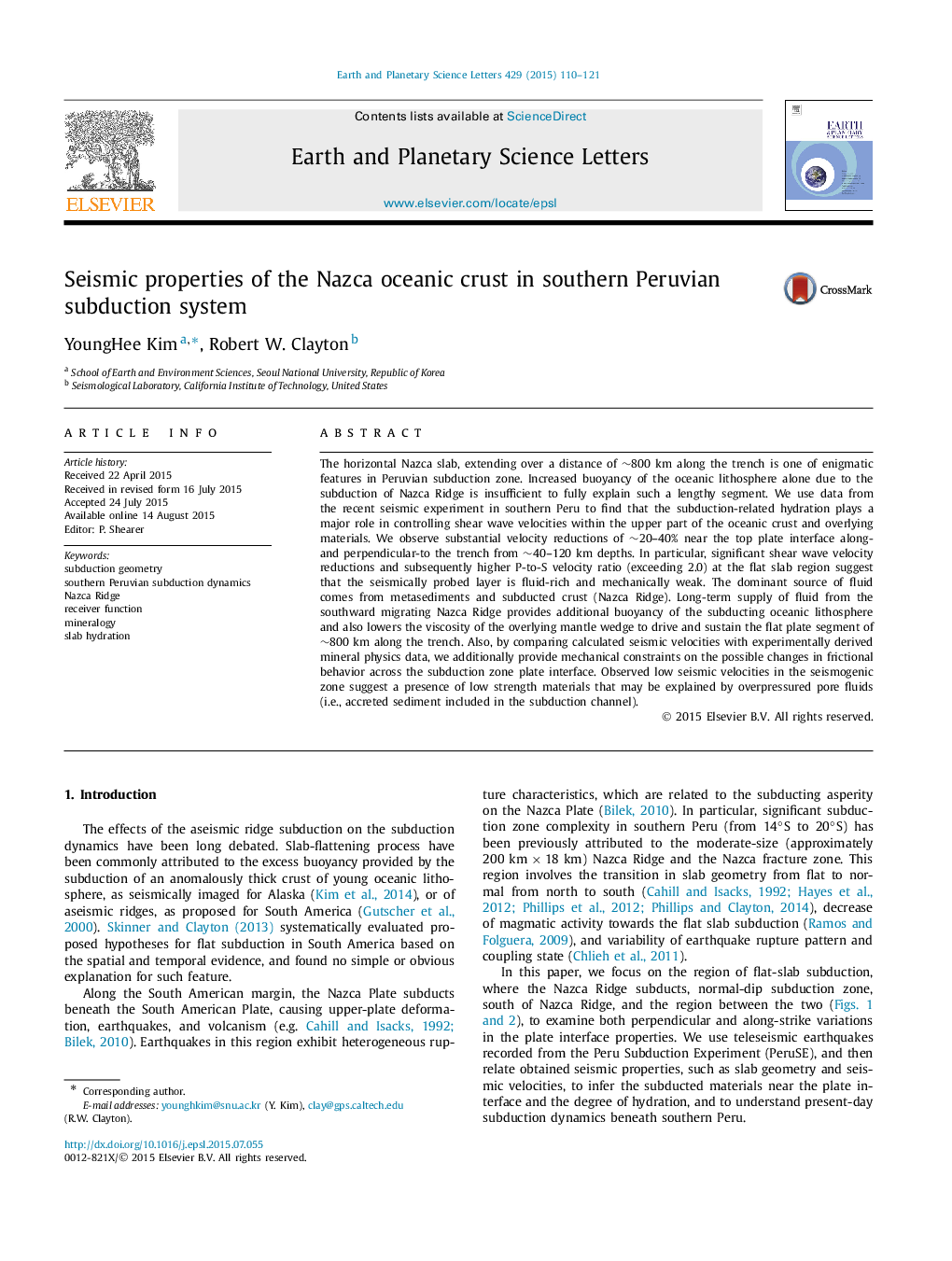| کد مقاله | کد نشریه | سال انتشار | مقاله انگلیسی | نسخه تمام متن |
|---|---|---|---|---|
| 6428186 | 1634727 | 2015 | 12 صفحه PDF | دانلود رایگان |
- Southern Peruvian subduction zone is imaged with seismic waves.
- Significant S-wave velocity reductions of â¼20-40% are found at the plate interface.
- Flat slab subduction zone appears hydrous due to Nazca Ridge subduction.
- Long-term supply of fluid from Nazca Ridge provides additional buoyancy.
- High pore fluid pressure affects seismic velocities observed near the coast.
The horizontal Nazca slab, extending over a distance of â¼800 km along the trench is one of enigmatic features in Peruvian subduction zone. Increased buoyancy of the oceanic lithosphere alone due to the subduction of Nazca Ridge is insufficient to fully explain such a lengthy segment. We use data from the recent seismic experiment in southern Peru to find that the subduction-related hydration plays a major role in controlling shear wave velocities within the upper part of the oceanic crust and overlying materials. We observe substantial velocity reductions of â¼20-40% near the top plate interface along- and perpendicular-to the trench from â¼40-120 km depths. In particular, significant shear wave velocity reductions and subsequently higher P-to-S velocity ratio (exceeding 2.0) at the flat slab region suggest that the seismically probed layer is fluid-rich and mechanically weak. The dominant source of fluid comes from metasediments and subducted crust (Nazca Ridge). Long-term supply of fluid from the southward migrating Nazca Ridge provides additional buoyancy of the subducting oceanic lithosphere and also lowers the viscosity of the overlying mantle wedge to drive and sustain the flat plate segment of â¼800 km along the trench. Also, by comparing calculated seismic velocities with experimentally derived mineral physics data, we additionally provide mechanical constraints on the possible changes in frictional behavior across the subduction zone plate interface. Observed low seismic velocities in the seismogenic zone suggest a presence of low strength materials that may be explained by overpressured pore fluids (i.e., accreted sediment included in the subduction channel).
Journal: Earth and Planetary Science Letters - Volume 429, 1 November 2015, Pages 110-121
